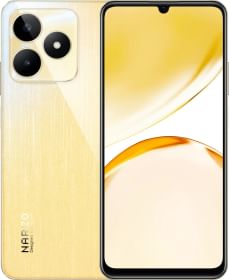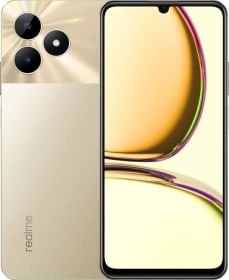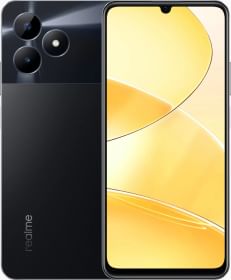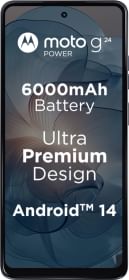In the vibrant world of music, where every note has the power to evoke emotions and transport us to different realms, the pursuit of audio quality is a never-ending quest. While many streaming platforms boast of offering high-quality audio, true connoisseurs of sound seek an even higher echelon known as lossless music. Today, dear readers, we embark on a journey to unravel the enigma of lossless music, revealing the essential components necessary to experience its true glory. So fasten your seatbelts, for we are about to embark on an audio odyssey that resonates with the soulful rhythms of India.
But before we list the elements for experiencing a perfect symphony, we should answer a few questions for your better understanding of the topic.
What is lossless Music?
Lossless music refers to audio files that retain all the original data and quality of the recorded sound. It is an uncompressed and unaltered representation of the music, preserving every detail and nuance as intended by the artist and audio engineer. Lossless formats ensure that no audio data is lost during compression, resulting in a faithful reproduction of the original recording.
In contrast, lossy audio formats, such as MP3 or AAC, employ compression techniques that discard certain audio data deemed less perceptible to the human ear. This compression reduces the file size significantly, making it more convenient for storage and streaming purposes but sacrifices some audio quality in the process. Lossy formats aim to strike a balance between file size and audio fidelity.

Lossless music formats, on the other hand, prioritize audio quality over file size. They ensure that the listener experiences the music in its purest form, without any degradation or loss of information. By preserving the full range of frequencies, dynamic range, and spatial characteristics, lossless music provides a more immersive and authentic listening experience.
Common lossless audio formats include FLAC (Free Lossless Audio Codec), ALAC (Apple Lossless Audio Codec), and WAV (Waveform Audio File Format). These formats retain the original audio quality while offering various levels of compression to reduce file size without compromising fidelity.
Lossless music provides audiophiles, music enthusiasts, and discerning listeners with the opportunity to enjoy music in its purest form, capturing the essence of the artist’s creation and the intricate details that may be lost in compressed formats. Whether it’s the resonant tones of classical compositions, the energetic beats of rock and pop, or the intricacies of acoustic performances, lossless music allows for a more immersive and faithful representation of the original recording, providing an elevated auditory journey for the discerning listener.
Also Read: A complete guide to Bluetooth Audio Codecs
What are lossless music formats?
Lossless music formats are audio file formats that retain all the original data and quality of the recorded sound, providing an uncompressed and unaltered representation of the music.
Which are the commonly used lossless music formats?
FLAC (Free Lossless Audio Codec)
FLAC is a widely adopted lossless audio format known for its efficient compression and high audio quality. It can reduce file sizes significantly without compromising the audio fidelity. FLAC is compatible with various devices and widely supported by audio players and streaming platforms.
ALAC (Apple Lossless Audio Codec)
ALAC is the lossless audio format developed by Apple. It offers similar audio quality to FLAC but is primarily used within the Apple ecosystem. ALAC is supported by Apple devices, iTunes, and Apple Music, making it a popular choice for Apple users.
WAV (Waveform Audio File Format)
WAV is an uncompressed audio format that retains the exact digital representation of the original audio. It is a simple and widely supported format, making it compatible with various audio software and hardware devices. WAV files are typically larger in size compared to compressed lossless formats.
AIFF (Audio Interchange File Format)
AIFF is another uncompressed audio format commonly used for lossless audio. It was developed by Apple and is widely supported on Mac systems and audio editing software. AIFF files are similar to WAV files in terms of audio quality but are primarily associated with the Apple ecosystem.
DSD (Direct Stream Digital)
DSD is a high-resolution audio format used for lossless audio playback. It uses a different approach than PCM-based formats like FLAC or WAV, capturing audio as a stream of single-bit values at a high sampling rate. DSD is often used for audiophile-grade recordings and requires specific hardware and software support.
Can I convert lossy formats to lossless formats?
A: No, you cannot convert lossy formats (such as MP3) to lossless formats (like FLAC) without losing the audio quality that was discarded during the original compression. The conversion only retains the existing audio quality; it does not restore the lost data.
Is it possible to stream lossless music online?
Yes, Several music streaming services now offer lossless audio streaming options, allowing users to enjoy high-quality, uncompressed music over the internet.
| Streaming Service | Lossless Audio Support | Service Tiers with Lossless | Lossless services available in India |
|---|---|---|---|
| Spotify | No | N/A | No |
| Apple Music | Yes (ALAC) | Apple Music Lossless | Yes |
| Tidal | Yes (FLAC) | HiFi and HiFi Plus | No |
| Deezer | Yes (FLAC) | HiFi | No |
| Amazon Music | Yes (FLAC) | Amazon Music HD | No |
| Qobuz | Yes (FLAC, DSD) | Studio Premier and Sublime+ | No |
| YouTube Music | No | N/A | No |
| Pandora | No | N/A | No |
| SoundCloud | No | N/A | No |
Things I need to experience Lossless music:
1. lossless format-supported device
To fully appreciate lossless music, it is essential to have audio playback equipment that supports these formats and delivers high-fidelity sound reproduction. This includes devices like smartphones, computers, portable music players, and audio systems capable of decoding and playing back lossless audio files.
2. The Right Pair of Headphones or speakers
Like a talented artist, headphones possess their own unique qualities that bring the music to life. However, when venturing into the realm of lossless audio, wired headphones or Speakers are an absolute must. Opt for a more recent pair of headphones boasting excellent frequency response, and robust drivers. Only then will you truly experience the symphony of sound as intended.
3. Digital-to-Analog Converter (DAC)

Picture the DAC as a conductor meticulously translating the intricate notes of lossless audio into a harmonious symphony. Sadly, this vital piece is often overlooked. Built-in or in-line DACs found in some headphones may fall short when it comes to supporting the full potential of 24-bit/192kHz lossless audio. The solution lies in acquiring an external DAC device, serving as an audio optimization maestro. Nevertheless, this investment is crucial in the pursuit of true lossless audio.
Can I Listen to Lossless music over Bluetooth-connected headphones or Speakers?

No, lossless music cannot be fully experienced over Bluetooth-connected headphones or speakers. Bluetooth audio transmission typically involves compression and decompression of the audio signal, which can result in a loss of quality. Bluetooth uses various codecs, such as SBC (Subband Coding) or AAC (Advanced Audio Coding), to compress the audio data for wireless transmission.
While some advanced codecs like aptX HD and LDAC support higher bitrates and better audio quality than standard Bluetooth codecs, they still involve some level of compression. These codecs may offer improved audio fidelity compared to standard Bluetooth codecs, but they are still lossy and not capable of reproducing the full quality of lossless music.
To enjoy lossless music in its truest form, wired connections are recommended. Wired connections provide a direct and unaltered audio signal transmission, allowing for the full fidelity of lossless formats. By using a wired connection, such as a headphone jack or USB connection, between your playback device and headphones or speakers, you can ensure a high-quality audio experience without the limitations of Bluetooth compression.
To enjoy lossless music in its truest form, wired connections are recommended. Wired connections provide a direct and unaltered audio signal transmission, allowing for the full fidelity of lossless formats. By using a wired connection, such as a headphone jack or USB connection, between your playback device and headphones or speakers, you can ensure a high-quality audio experience without the limitations of Bluetooth compression.





























